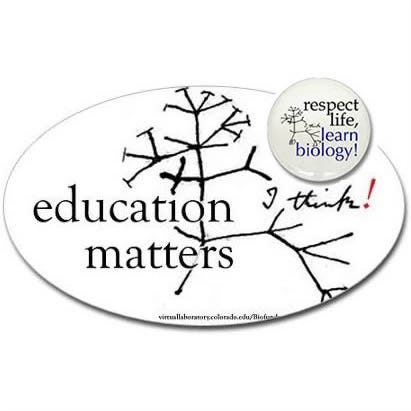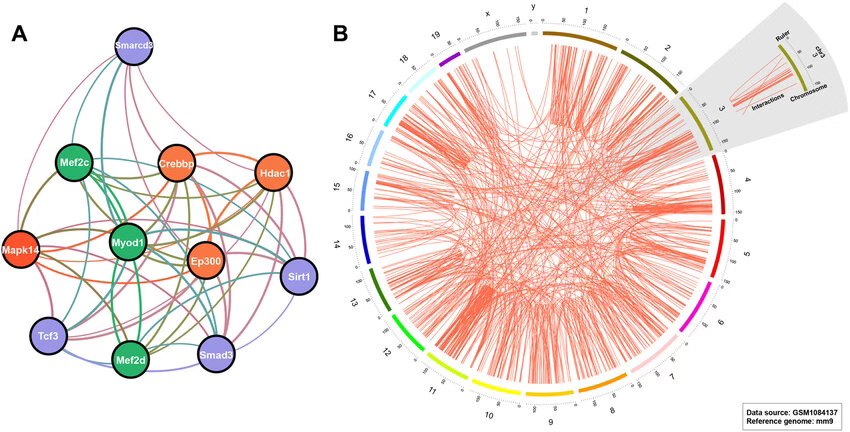The reverse Dunning-Kruger effect and biology education
How teaching "too much" undermines understanding.
The Dunning-Kruger (DK) effect (link) is a widely recognized phenomenon where a person seriously over-estimates their understanding of a subject or their skill level. Examples can be found in various aspects of society, including flat earthers, moon-landing skeptics, anti-vaxxers, physicists expounding on consciousness, and a range of conspiracy and alternative medicine theorists (think QAnon and rhino horns). The "reverse DK" effect is an often unrecognized educational counterpart of the DK effect; it is the tendency of educators to overestimate the effectiveness of their teaching and how well their students have learned to grasp, appreciate, and correctly apply what has been presented to them. The reverse DK effect is distinctly different from the imposter effect in which a person underestimates their own expertise. Building on the work of a number of people, notably student responses to various “concept tests” such as Hestenes et al's Force Concept Inventory (FCI) or our own Biology Concepts Instrument (BCI), and student interviews captured during the Harvard-Smithsonian "A Private Universe" project. We are left with the serious question, "Why don’t even the brightest students truly grasp basic science concepts? [1]
Why does the prevalence of the reverse DK effect in education, and particularly biology education, matter? Think or imagine how college courses are "designed". All too often course content is "inherited" from past instructors and supported by encyclopedic textbooks. Many is the instructor who worries that they may not have "covered" all of the "essential" topics (think Krebs cycle or Punnett squares, if you can bear to). But how, exactly, are these essential topics identified? and how is understanding them verified? [2]. All too often the result is memorization, leading to a lack of confidence when called upon to apply common principles to new biological systems or processes. The result is not surprising, since generally there is little institutional motivation, departmental engagement, or the resources needed to redesign course and curricular content [3].
In biology, something I have pondered [4], it is worth remembering that the central observation upon which our (scientific) understanding of life is based is the cell. All life on earth, every type of organism, is built from cells. Cells arise only from pre-existing cells. More to the point, these cells display common features. Cells are membrane-bounded, non-equilibrium systems that contain digitally encoded information in the form of DNA sequences together with the machinery needed to copy, access, and decode that information. Given what we know about this machinery, it appears that all cells share a common ancestor that emerged from a pre-life world billions of years ago.
Zhu et al , 2023. Gene regulatory network benefits from three-dimensional chromatin conformation and structural biology. Computational and Structural Biotechnology Journal.
Cells, and the organisms that they form, reflect their evolutionary history, which includes many adaptive and non-adaptive accidents. Cellular behaviors arise through, and are controlled by molecular interaction networks (with feedback and feedforward components) that impact the "expression" of genes and the behavior(s) of molecular machinery. Cells are built, maintained, and powered by networks of coupled chemical reactions that extract energy from their external environment while exporting entropy. The movement of molecules, the stability of their interactions, and the activation energies required for chemical reactions to occur arise from Brownian (thermal) motion, a stochastic process [5]. The result is an inescapable level of “noise” in biological systems [6]. In many cases, the energy capture system used is based on electrochemical gradients across boundary membranes.
All biological systems can be understood in large part in terms of this relatively small list of processes. Yet, often students are subject to much longer lists of terms to be memorized and returned (during exams) to the instructor, a kind of call and response litany I remember from when I was an altar boy (some time ago). The result is that students are often unable to recognize and apply underlying principles to biological problems; to recognize when an argument is flawed or how to design experiments that might better reveal what is going on. This is not to say that understanding the details of any particular biological system's behavior (or response to drugs etc) is simple or predictable in all but the most general of terms, since such systems (e.g. brain activity, cancer cell progression, immune system responses, etc) are controlled by and based upon tens of thousands of molecular and feedback interactions that are subject to stochastic noise. While physics and chemistry may be more rigidly governed by various principles, it is more accurate to say that biological systems are constrained rather than determined by these principles.
Summary: The failure to recognize and address the reverse DK effect in all disciplines can undermine educational efforts. Instructors can crowd their courses with “factoids” to memorized, without focussing on the underlying processes involved. In a biological context, while underlying processes maybe universal, a specific fact may be species specific. It is also the case that most processes remain incompletely characterized; the presence of unidentified components can have therapeutic implications. A very real, and costly example is the frequency at which drugs developed and tested in the mouse fail when applied to humans [7]. Students, much like working research biologists, need practice (time, opportunities, coaching, and critical feedback) to master the ability to identify relevant common principles and then apply them appropriately to specific systems in order to propose and test various models for how these systems work [8].
These are changes that require a willingness to challenge conventional “wisdom” and community expectations. It might help incentivize such changes if institutions took seriously calls to objectively evaluate student learning outcomes, and to make learning outcomes, retention, time to degree, and post-graduate “success” important factors in the funding of departments and degree programs. Generative AI chatbots offer such an opportunity (stay tuned). While the development or persistence of misconceptions about topics such as cosmology or particle physics may have limited practical consequences, similar misunderstandings in biology can give rise to harmful beliefs in alternative medical treatments, exaggerated claims on the dangers of vaccination, or the implications of climate change that can have significant personal and societal impacts.
Notes: The original version was posted on the bioliteracy.blog 14 September 2017. Revised in part using the editorial input of ChatGPT3.5.
Footnotes for the excessively curious
For a more academical discussion see: Cooper & Klymkowsky 2022. Aligning assessment goals with the current and future technologies needed to achieve them. in "Technologies in Biomedical and Life Science Education: Approaches and Evidence of Efficacy for Learning" H. Witchel & Michael Lee, eds.
McClymer & Knoles 1992. Ersatz Learning, Inauthentic Testing.
Check out my own attempt at an introductory cell and molecular biology course, biofundamentals (described here: Klymkowsky et al., 2016. The design and transformation of Biofundamentals: a non-survey introductory evolutionary and molecular biology course. Life Science Education). It’s open source, i.e. free.
e.g: Klymkowsky. 2023. Rethinking (again) Hardy-Weinberg and genetic drift in undergraduate biology (pdf). Frontiers of Genetics
A longish talk (onYouTube) “Coping with the Noisy Nature of Life in Teaching“
Honegger & de Bivort. 2017. Stochasticity, individuality and behavior.
As an example, see Kolata 2013. Mice Fall Short as Test Subjects for Some of Humans’ Deadly Ills. New York Times.
Klymkowsky, 2021. Making mechanistic sense: are we teaching students what they need to know? (pdf) Dev. Biol. 476: 308-313.




